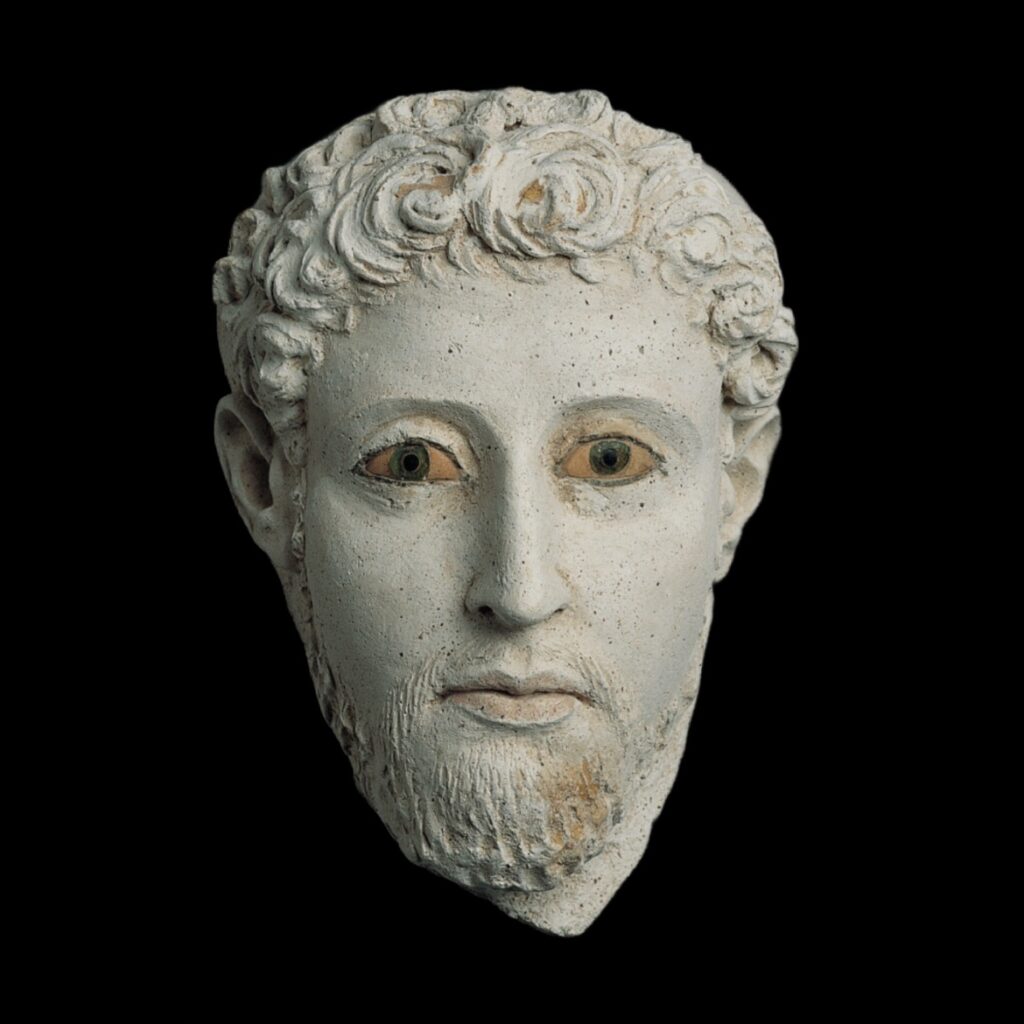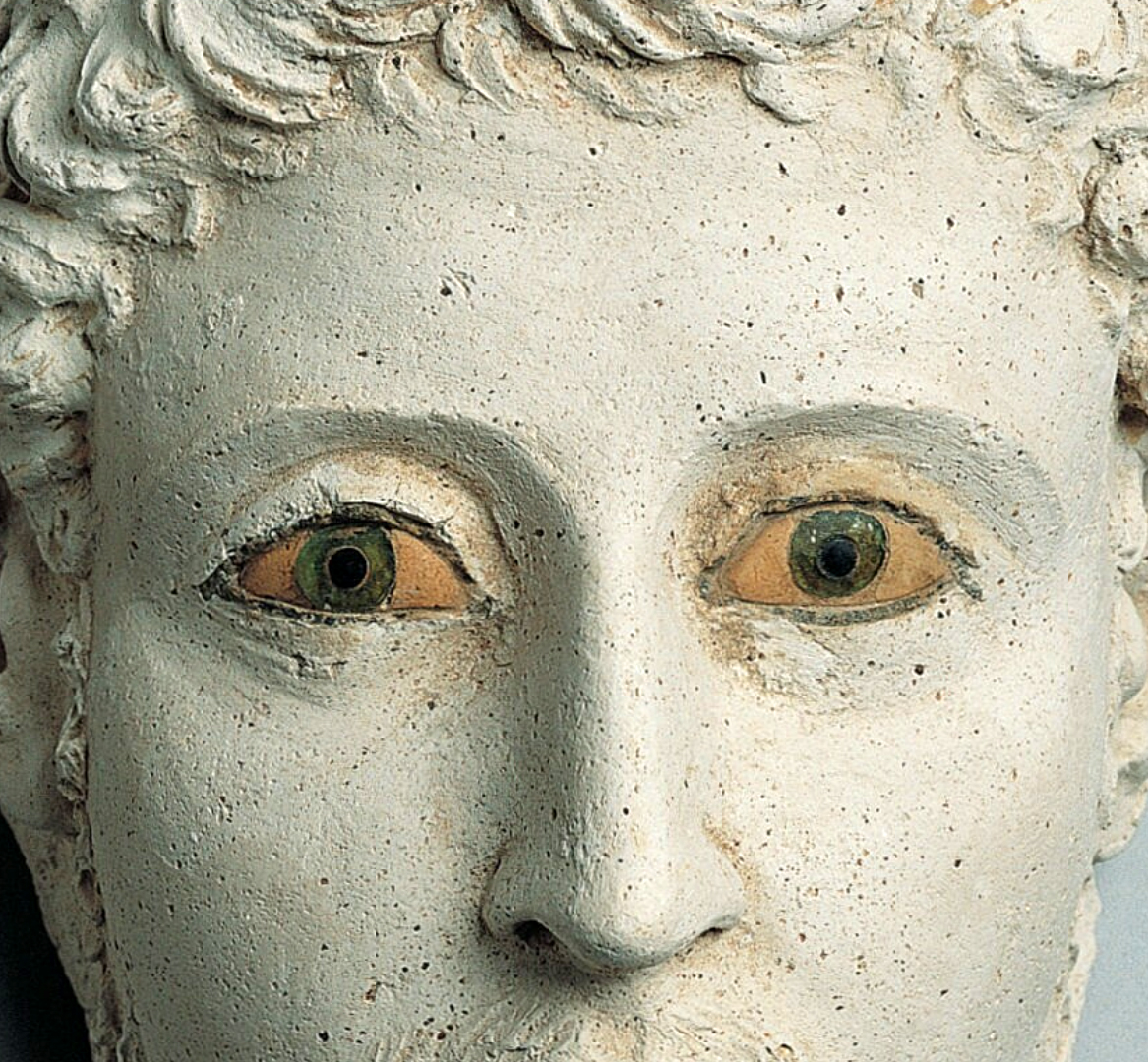Inlaid glass eyes, when they survive, have a way of enlivening ancient sculpture – set into a portrait, these ones have weathered in such a way to give this man a peculiarly jaundiced aspect. Patently unfair and if you can look past the artificial intimations of cirrhosis, the portrait itself is a marvelous survival, and one likely thanks to an arid climate.
The material is stucco, and here it has been molded into a face, with the slightly off-kilter purse to the mouth, swirly coiffure, and restrained facial hair modeled while still wet. And the lively result (I think) is due in large part to how quickly the whole operation took place: think virtuoso sketch rather than laboriously staged painting.

It is a mummy portrait, meaning it was made to represent the deceased, incorporated into the wrappings that contained his mummified body. Culturally the practice is fully Egyptian but this man was clearly Roman and a bit of a dandy. His carefully curled hair and beard place him early in the Antonine period – a testament to the reach of imperial follicular style and the enthusiasm with which it was adopted throughout the empire.
A Roman, and an aristocratic one at that, shown with bits of gilding in his hair.




